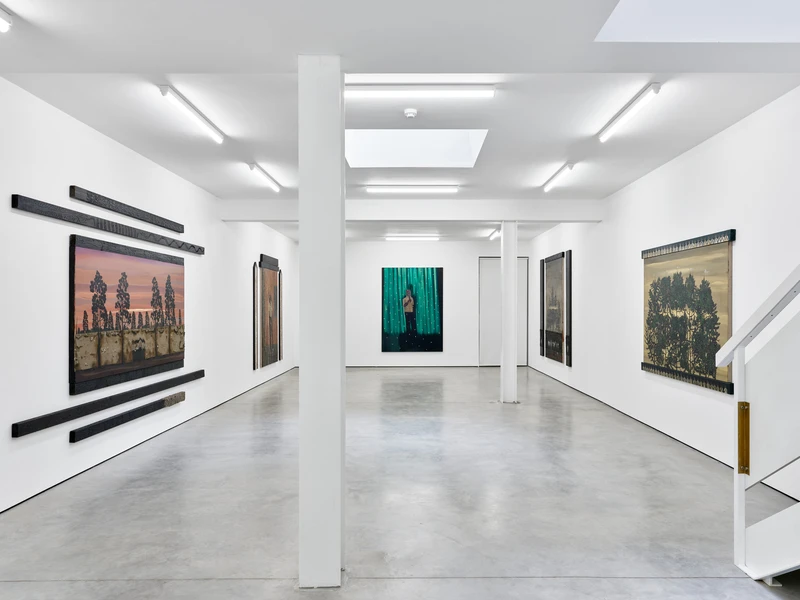Abul Hisham: Seven Scenes of Separation
27 Sep-16 Nov 2024


MAMOTH is pleased to present Seven Scenes of Separation by Amsterdam- based artist Abul Hisham (b. 1987, Thrissur, Kerala), on view from the 27th September. This marks the artist’s first exhibition in the UK and with the gallery.
Surreptitious scenes and contemplative moments are on display in Seven Scenes of Separation. There is the question of whether one should really be intruding on these images at all. Abul Hisham’s, (mostly male), figures are held at a distance, painted behind strings of jasmine buds, showers streams of small coloured dots or showers of rain. Like a lace veil, these are porous barriers that are only mildly obscuring. There are lone figures that turn their backs as if reluctant to be subjects and protective of what appears to be their partaking
in rituals. There are those pictured in tight, secretive huddles. They hardly ever meet the viewer’s eyes.
Apocalyptic, livid skies predominate in several of the paintings. Beneath their intense and glowing light, groups of men, seemingly clothed in uniform, find themselves barricaded behind a stretch of wall. The structure, created from a paint-powder composite, feels alive. Hives of sandy mass seems to erupt on its surface, while damp blots and greasy marks saturate parts. The men’s reactions to the obstruction are various. In several works the figures are confounded by its expanse. Others are oblivious; some face into its abrasive depths.
This suite of images proposes questions around their symbology. The wall could be protective as much as it is oppressive, mundane as much as it is majestic.
In Silent Whispers 2, 2024, its crumbling, powdery texture might relates to the Christian and Islamic belief that humans were created from dust to which they return after death. There are crowds, painted crammed onto strips of wood flanking the main image, that could be pilgrims. Atop too there are lengths of wooden carvings that recall lively ancient temple sculptures. The overall, three- part format is like a shrine or altar piece in service of heterogeneity. All kinds of contradictions, cross-overs and hypocrisy are brought alive.
Hisham’s eclecticism follows through in his artistic style. His relocation
to Amsterdam from India in 2021, marks the point at which he first began painting and wood-carving. The city’s art collections provided Hisham with source material that provoked this shift. His Pillars, 2024, constructed from lengths of darkened wood that scale great heights, recount the woodwork traditions of Indonesia and Papua New Guinea. There are his paintings’s structural configurations that show signs of Frank Stella’s irregular canvases. Such transformations are a familiar story in the annals of Indian art history. Gulammohammed Sheikh changed course and cemented his renowned style after seeing miniatures at the V&A along with roaming the British Museum and National Gallery in the 1960s. Hisham too has filtered his exposure to diverse artistic schools into a visual idiom that is in turn naïve and knowing.
Trees are painted with a charming regularity and story-book simplicity. In the triptych Another Day , 2024, the branches of five trees are covered in spidery puffs. They stand flat along a wall. To their side, painted on separate panels, are monumental species, their plumb leaves dotted with ruby red apples. There are parallels with Bhupen Khakhar’s vibrant renderings of nature. Hisham’s works, though, pair the almost whimsical and surreal with religious piety. He suggests that, perhaps, nothing is really as separate as it seems.
Text by Dr Cleo Roberts-Komireddi